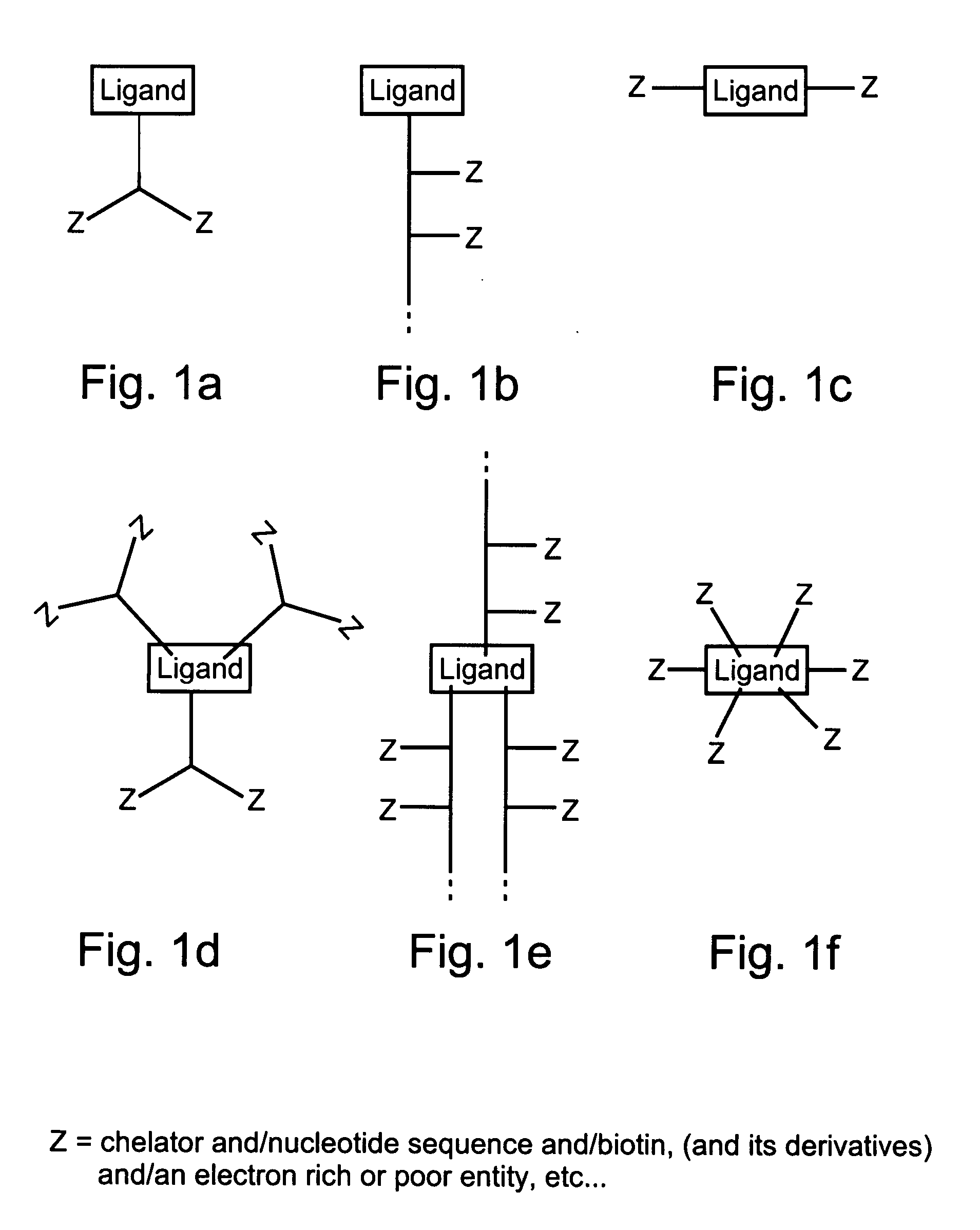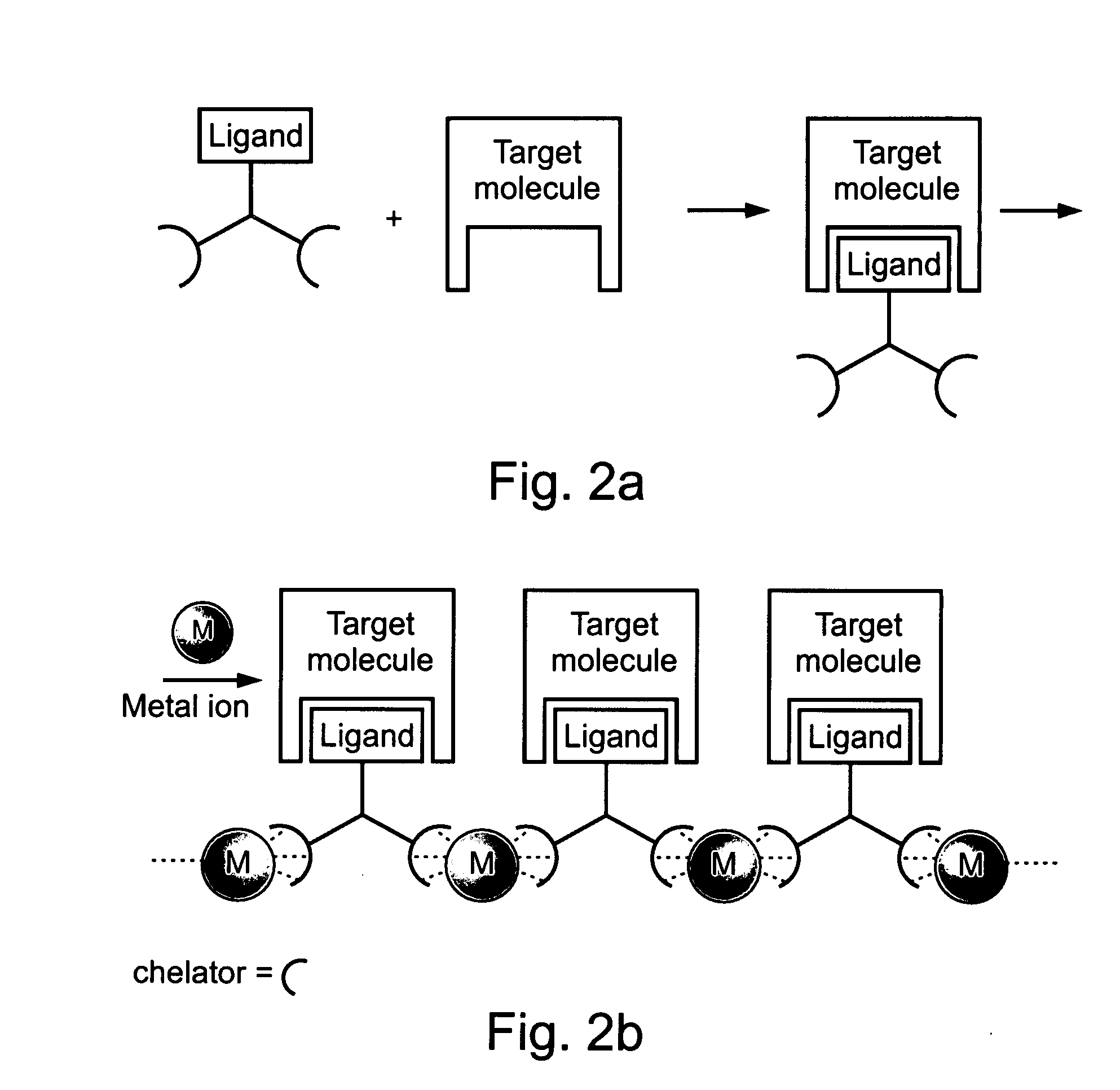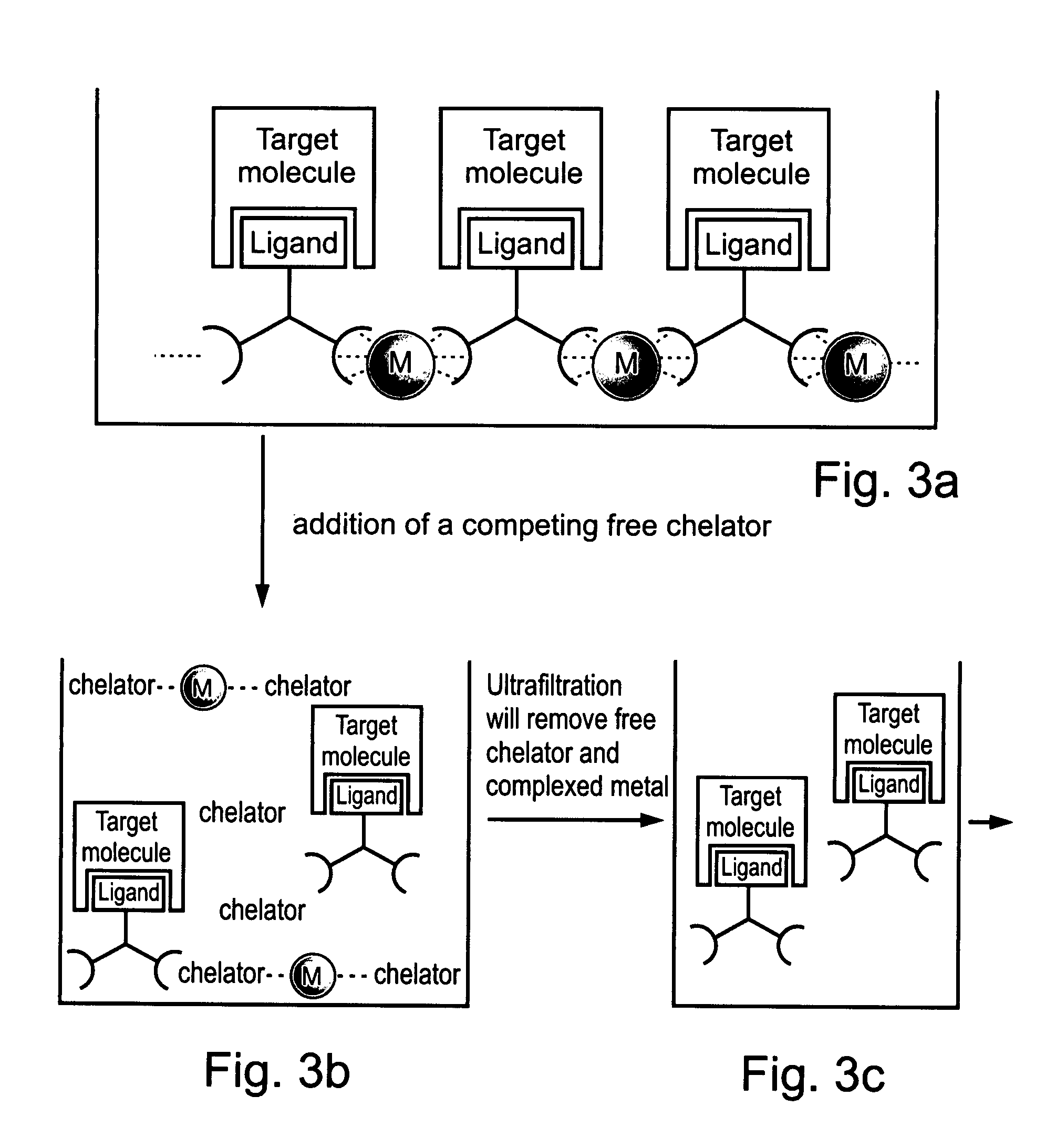Compositions and methods for purifying and crystallizing molecules of interest
a technology of crystallization and composition, applied in the field of composition, can solve the problems of failure to meet one or several, impede the large-scale use of recombinant protein products, and inability to achieve smart polymers
- Summary
- Abstract
- Description
- Claims
- Application Information
AI Technical Summary
Benefits of technology
Problems solved by technology
Method used
Image
Examples
example 1
Synthesis of Non Covalent Multi Ligand Complexes Utilizing Chelator-Metal Complexes
[0274] The ability of chelators to bind metals, with different specificities and affinities is well described in the literature. To generate the non-covalent multi ligand complex of the present invention, a linker, (of a desired length) is modified to bind a specific ligand, and a chelator to generate the following general structure of: ligand-linker-chelator.
[0275] Then, by the addition of an appropriate metal, a non-covalent multi-ligand complex should be formed. (FIG. 12)
[0276] For example, a hydroxamate (which is a known Fe3+ chelator) derivative is synthesized (FIG. 13a) such that in the presence of Fe3+ ions, a non-covalent multi-ligand complex is formed (FIG. 13b). A general synthetic pathway for modification of representative chelators with a general ligand is shown in FIG. 14. Such a synthesis can be similar to the one presented by Margherita et al., 1999 supra.
[0277] The utilization of c...
example 2
Synthesis of Non-Covalent Multi Ligand Complexes Utilizing Electron Rich-Poor Complexes
[0279] Electron acceptors form molecular complexes readily with the “a excessive” heterocyclic indole ring system. Indole picric acid was the first complex of this type to be described nearly 130 years ago [Baeyer, and Caro, (1877) Ber. 10:1262] and the same electron acceptor was used a few years later to isolate indole from jasmine flower oil. Picric acid had since been used frequently for isolating and identifying indoles as complexes from reaction mixtures. Later, 1,3,5-trinitro benzene was introduced as a complexing agent and often used for the same purpose [Merchant, and Salagar, (1963) Current Sci. 32:18]. Other solid complexes of indoles have been prepared with electron acceptors such as: styphnic acid [Marion, L., and Oldfield, C. W., (1947) Cdn. J. Res. 25B 1], picryl halides [Triebs, W., (1961) Chem. Ber. 94:2142], 2,4,5,7-tetranitro-9-fluorenone [Hutzinger, O., and Jamieson, W. D., Ana...
example 3
Synthesis of Non-Covalent Multi Ligand Complexes Utilizing a Combination of Electron Rich-Poor and Chelator-Metal Relationships
[0283] One can combine the two complexing abilities as described in Examples 1 and 2 above, so as to form non-covalent multi ligand complexes. An example of the general structure of such a non-covalent multi ligand complex is shown in FIG. 19.
[0284] To this end, a chelator that is covalently bound to an electron poor moiety is desired. A synthetic pathway for generating such a combination is presented in FIG. 20.
[0285] For example, a chelator (e.g. catechol) that is capable to bind both to M2+, and M3+ metals, is capable in the presence of M2+ and M3+ metals, to form a non-covalent-di-ligand, (FIG. 21a), or a non-covalent-tri-ligand (FIG. 21b).
[0286] The presence of a peptide (or polypeptide) with a Trp residue (or any other electron rich residue) might lead to the formation of the structures shown in FIGS. 22a-b.
[0287] The combination of the two above ...
PUM
 Login to View More
Login to View More Abstract
Description
Claims
Application Information
 Login to View More
Login to View More - R&D
- Intellectual Property
- Life Sciences
- Materials
- Tech Scout
- Unparalleled Data Quality
- Higher Quality Content
- 60% Fewer Hallucinations
Browse by: Latest US Patents, China's latest patents, Technical Efficacy Thesaurus, Application Domain, Technology Topic, Popular Technical Reports.
© 2025 PatSnap. All rights reserved.Legal|Privacy policy|Modern Slavery Act Transparency Statement|Sitemap|About US| Contact US: help@patsnap.com



